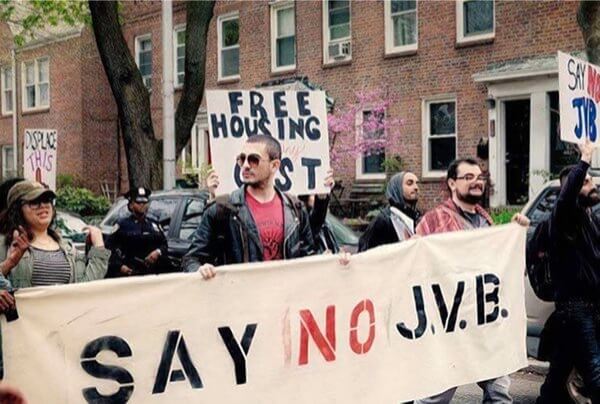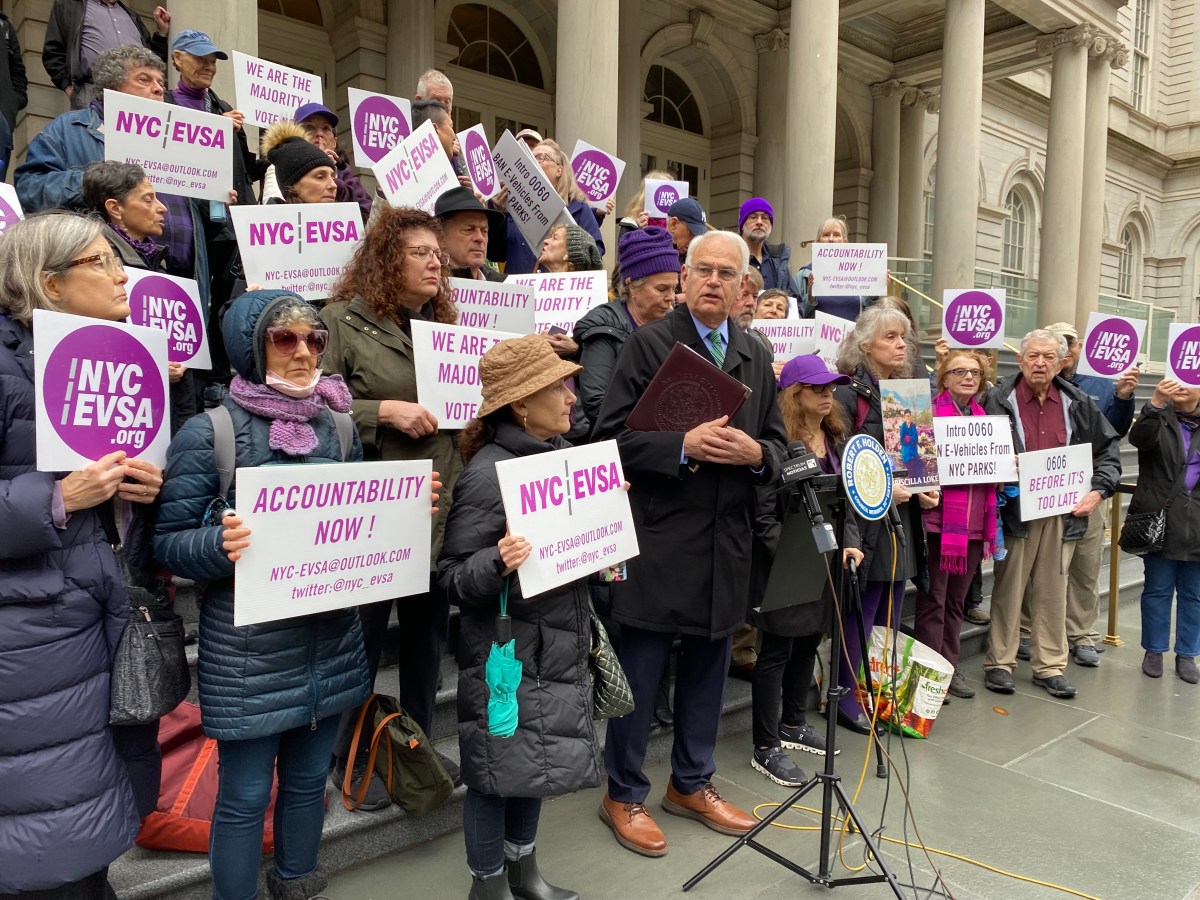By Bill Parry
A community activist in Sunnyside was distressed to hear the term “ethnic cleansing” used during an anti-gentrification rally and march last week.
Nearly a hundred protesters from all over Queens joined forces for a rally at the 46th Street subway station in Sunnyside on the evening of April 20. Organizers called on City Councilman Jimmy Van Bramer (D-Sunnyside) and other elected officials in western Queens to oppose three major projects — the Long Island City Core Rezoning, the Brooklyn-Queens Connector and the Sunnyside Yards development — they say will raise rents and displace residents.
“We’re trying to bring attention and raise awareness about these three huge proposals that will change the landscape in western Queens forever,” Queens Anti-Gentrification Project founder Michael Forest said.
Woodside resident Dee Raymond was the main speaker during the rally. He warned the city was working with real estate companies at the expense of the working class.
“In New York, we see giant real estate companies driving city policy, while the people are disregarded by sell-out politicians, like Bill de Blasio who tells us lies about their appreciation for diversity and inclusion and their newfound love for immigrants in the age of Trump,” Raymond said. “We see white-supremacist City Planning policies that protect the richest neighborhoods while specifically targeting working class communities of color for luxury real estate in what can only be accurately described as ethnic cleansing.”
Patricia Dorfman, the executive director of the Sunnyside Chamber of Commerce, objected on social media.
“Such use minimizes ethnic cleansing victims and makes no sense in the privileged world that allows us the freedom to participate in public demonstrations,” she wrote. “Describing the actual out-of-proportion results of gentrification on communities of color can be done precisely and are grim enough.”
Forest defended Raymond’s use of the term, and provided further context.
“Some folks have taken offense at the use of the term,” Forest said. “However, members of Queens Anti-Gentrification Project want to make clear that its usage is not meant as a criticism of anyone in particular. Instead, we understand the term ‘ethnic cleansing’ as a literal description of what is taking place, which becomes clear when you look at neighborhoods like Williamsburg, which used to be predominately working class Latino, but is now full of boutiques, luxury condos and rich European tourists.”
After the rally, Forest led a march past Van Bramer’s office on 48th Street and Queens Boulevard and through Sunnyside Gardens ending at Van Bramer’s home on 46th Street.
“We’re asking Mr. Van Bramer to come out against these projects and stand with us before it’s too late,” Forest said.
Van Bramer wasn’t home at the time. He was out of town attending to a death in the family, but he had his staff distribute a letter he wrote to the protesters.
“Making sure our neighborhoods remain affordable for all kinds of families is important to me. Further gentrification is a real threat,” Van Bramer wrote. “I share many of your concerns, and I have been publicly critical of plans the city has put forth that would do more harm than good.”
Van Bramer had offered to meet with the group prior to Thursday’s rally and march and discuss their concerns, but his offer was rejected.
“I’m a proud progressive. And I’m proud of all the work my office has done these last seven years,” Van Bramer wrote. “I’ve led the resistance to Trump since his election, and I’ll continue to do so. Again, thank you for your efforts. I look forward to sitting down and talking about our shared goals in the near future.”
Meanwhile, after Mayor de Blasio conceded last week that funding issues could shelve the Brooklyn-Queens Connector, Friends of the BQX Executive Director Ya-Ting Liu said such talk did not slow momentum for the project.
“In just the last three days, more than 100 additional New Yorkers from Queens have signed up with our organizers to support the BQX,” she said. “These people know, all too well, what it’s like to live in the city’s more transit-starved areas, and they are excited about the opportunity the BQX offers to connect them to jobs, schools, parks, hospitals and transit hubs along the route. Despite a vocal group of naysayers, New Yorkers know what it’s like to live without equitable access to transit and are supporting the BQX in ever-higher numbers.”
Reach reporter Bill Parry by e-mail at bparr




































